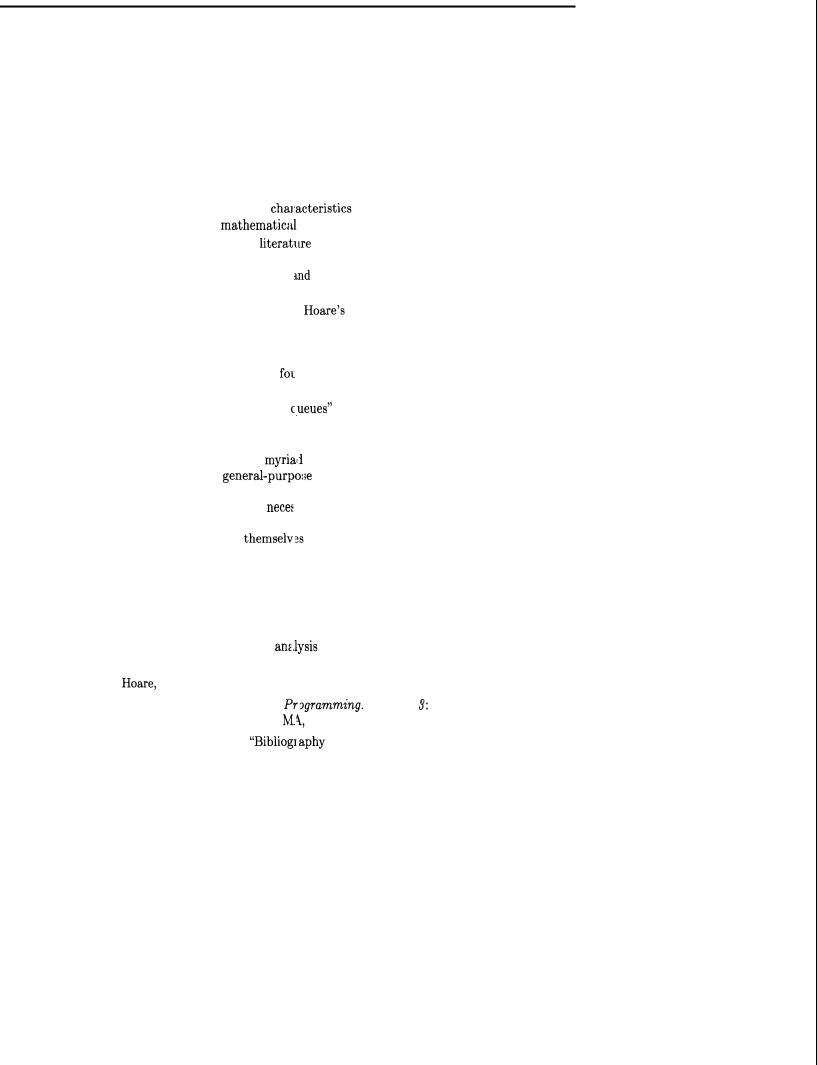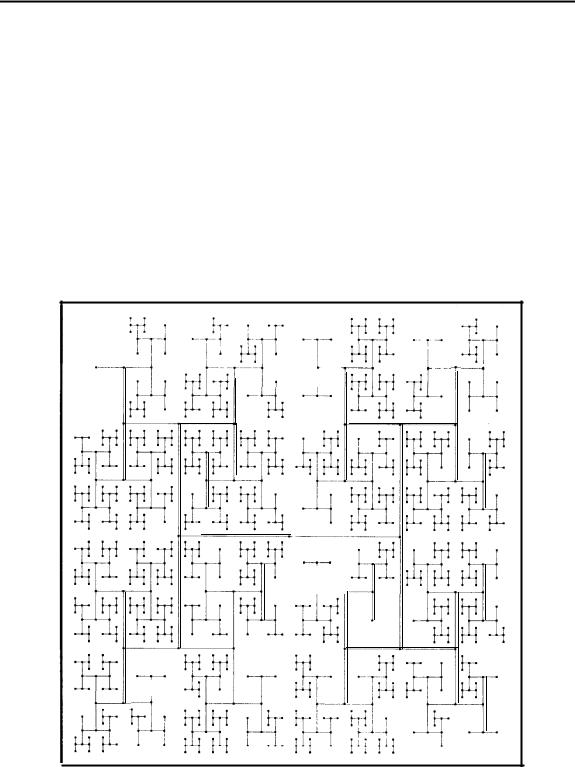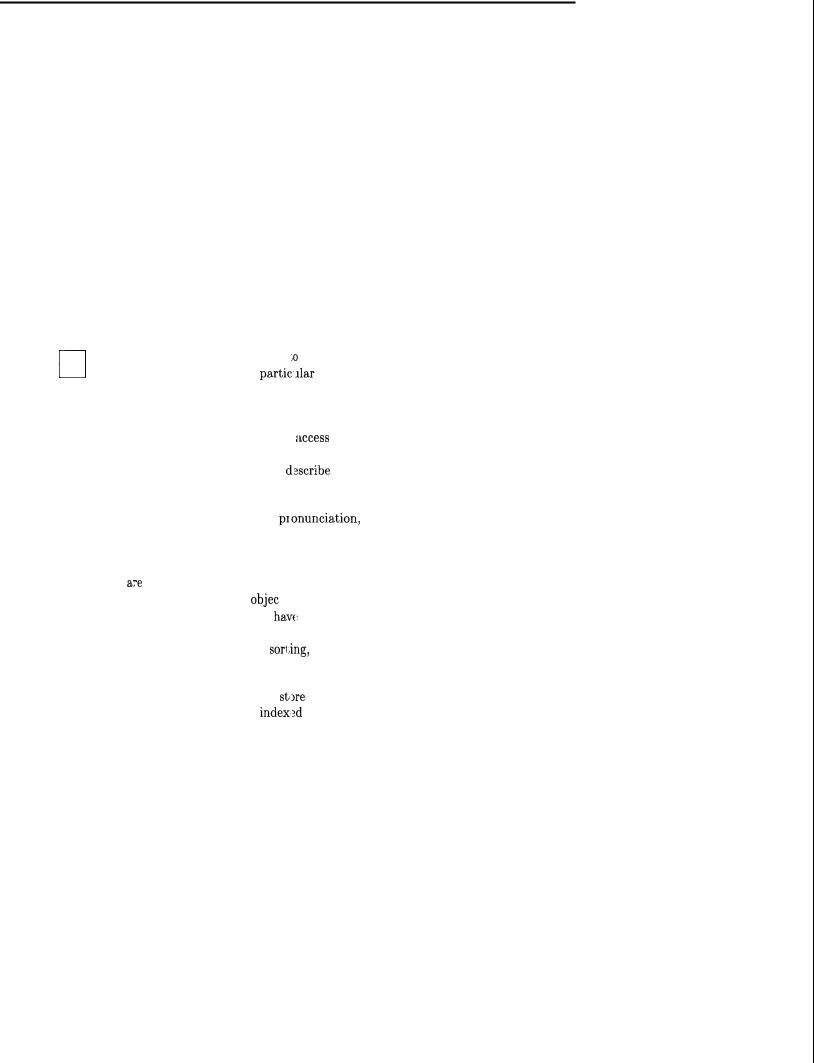
Algorithms [Sedgewick, Robert]
.pdf









172 |
CHAPTER 14 |
Initialize the data structure.
Search for a record (or records) having a given key. Insert a new record.
Delete a specified record.
Join two dictionaries to make a large one.
Sort the dictionary; output all the records in sorted order.
As with priority queues, it is sometimes convenient to combine some of these operations. For example, a search and insert operation is often included for efficiency in situations where records with duplicate keys are not to be kept
within |
the data structure. In many methods, once it has |
been determined |
that a |
key does not appear in the data structure, then the |
internal state of |
the search procedure contains precisely the information needed to insert a new record with the given key.
Records with duplicate keys can be handled in one of several ways, depending on the application. First, we could insist that the primary searching data structure contain only records with distinct keys. Then each “record” in this data structure might contain, for example, a link to a list of all records having that key. This is the most convenient arrangement from the point of view of the design of searching algorithms, and it is convenient in some applications since all records with a given search key are returned with one search. The second possibility is to leave records with equal keys in the primary searching data structure and return any record with the given key for a search. This is simpler for applications that process one record at a time, where the order in which records with duplicate keys are processed is not important. It is inconvenient from the algorithm design point of view because some mechanism for retrieving all records with a given key must still be provided. A third possibility is to assume that each record has a unique identifier (apart from the key), and require that a search find the record with a given identifier, given the key. Or, some more complicated mechanism could be used to distinguish among records with equal keys.
Each of the fundamental operations listed above has important applications, and quite a large number of basic organizations have been suggested to support efficient use of various combinations of the operations. In this and the next few chapters, we’ll concentrate on implementations of the fundamental functions search and insert (and, of course, initialize), with some comment on delete and sort when appropriate. As with priority queues, the join operation normally requires advanced techniques which we won’t be able to consider here.
Sequential Searching
The simplest method for searching is simply to store the records in an array,
